
How to Use NI-MH Battery Charger: Examples, Pinouts, and Specs
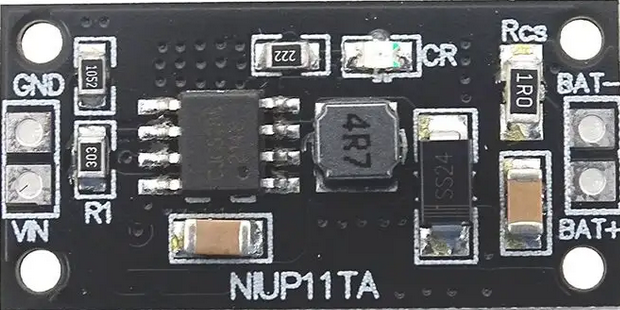
 Design with NI-MH Battery Charger in Cirkit Designer
Design with NI-MH Battery Charger in Cirkit DesignerIntroduction
A Nickel-Metal Hydride (Ni-MH) Battery Charger is an electronic device designed to replenish the charge in Ni-MH rechargeable batteries. These chargers are preferred for their ability to charge batteries efficiently and safely, making them suitable for a wide range of applications including consumer electronics, remote controls, flashlights, and portable power tools.
Explore Projects Built with NI-MH Battery Charger
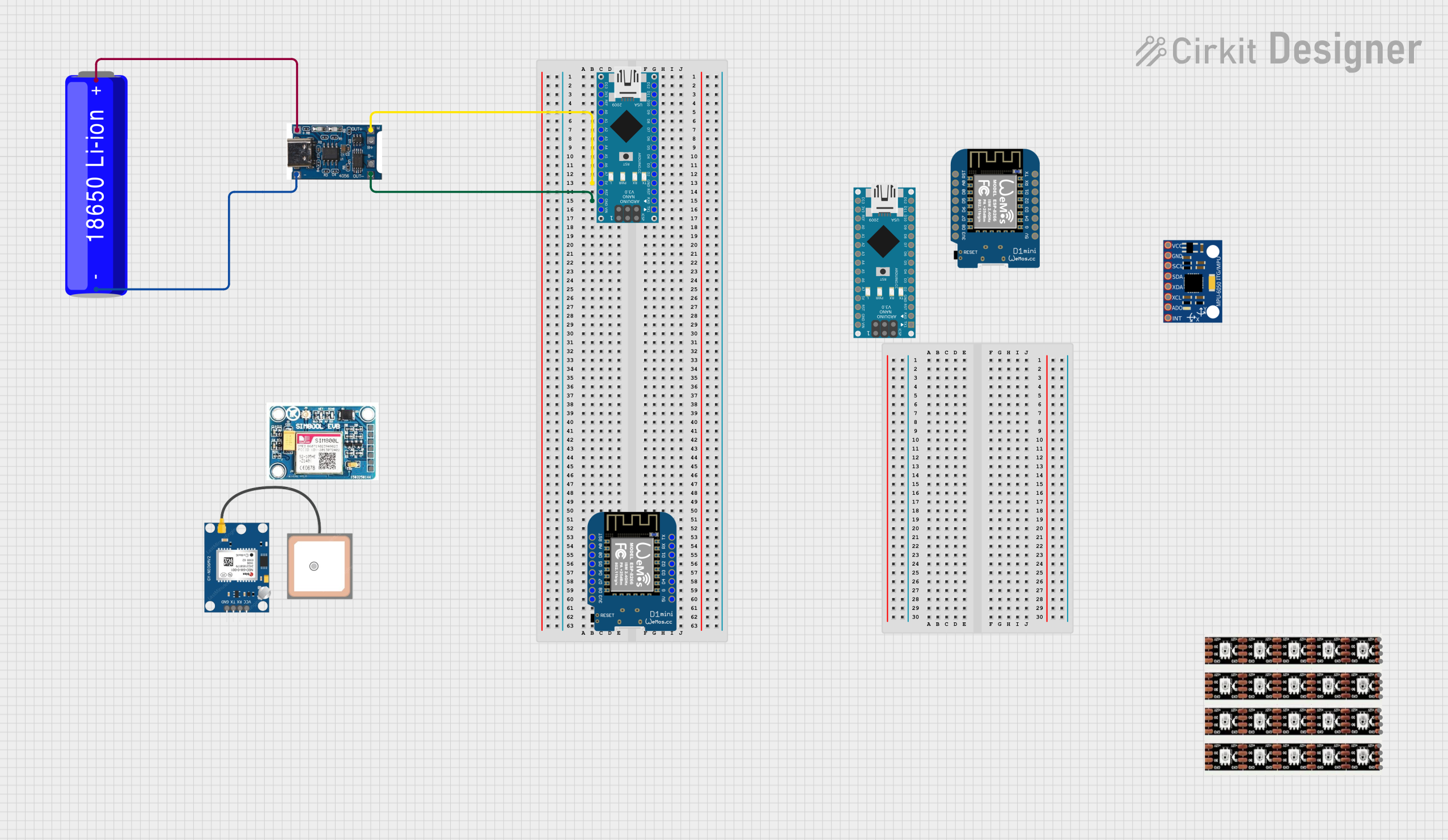
 Open Project in Cirkit Designer
Open Project in Cirkit Designer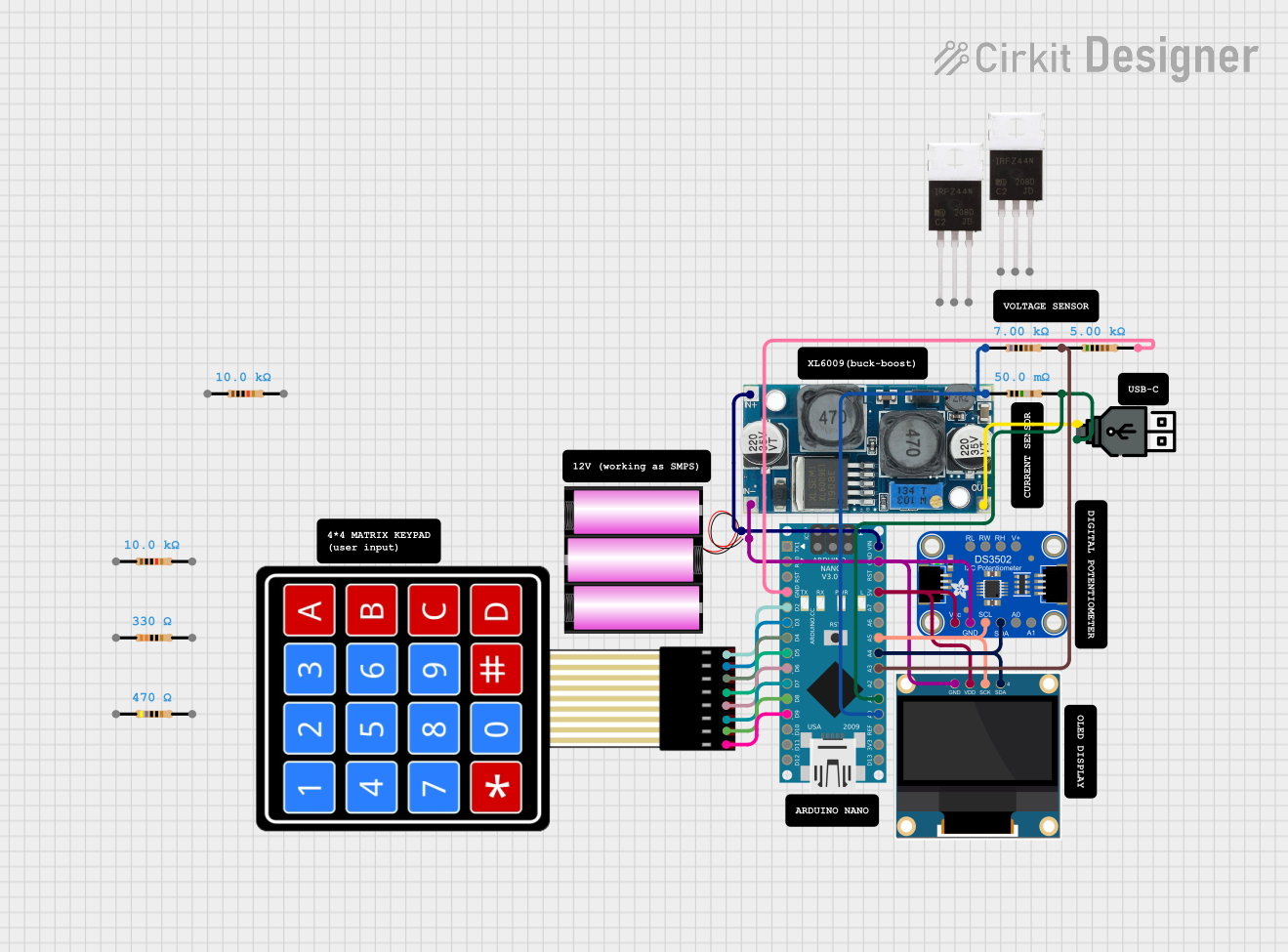
 Open Project in Cirkit Designer
Open Project in Cirkit Designer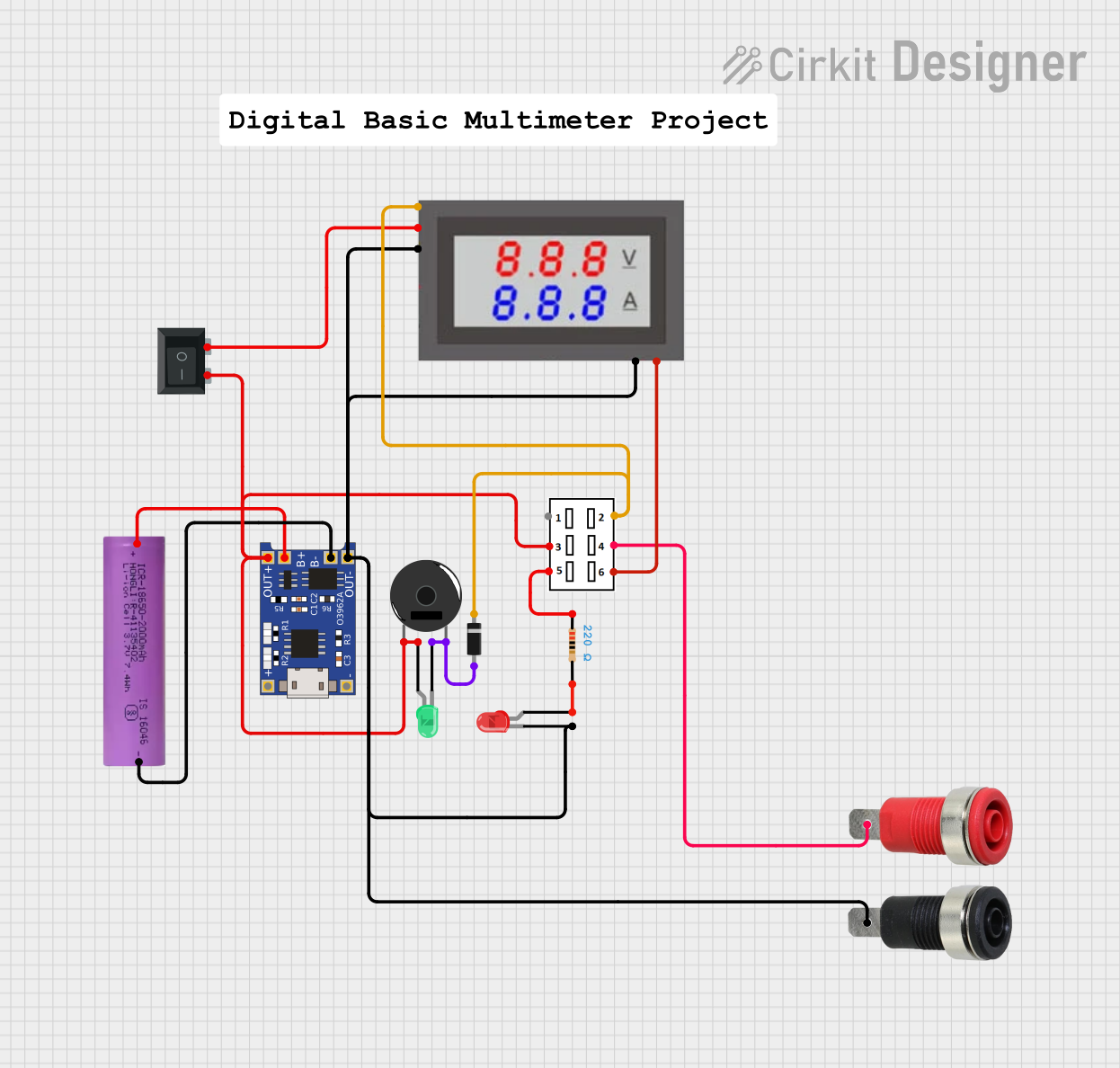
 Open Project in Cirkit Designer
Open Project in Cirkit Designer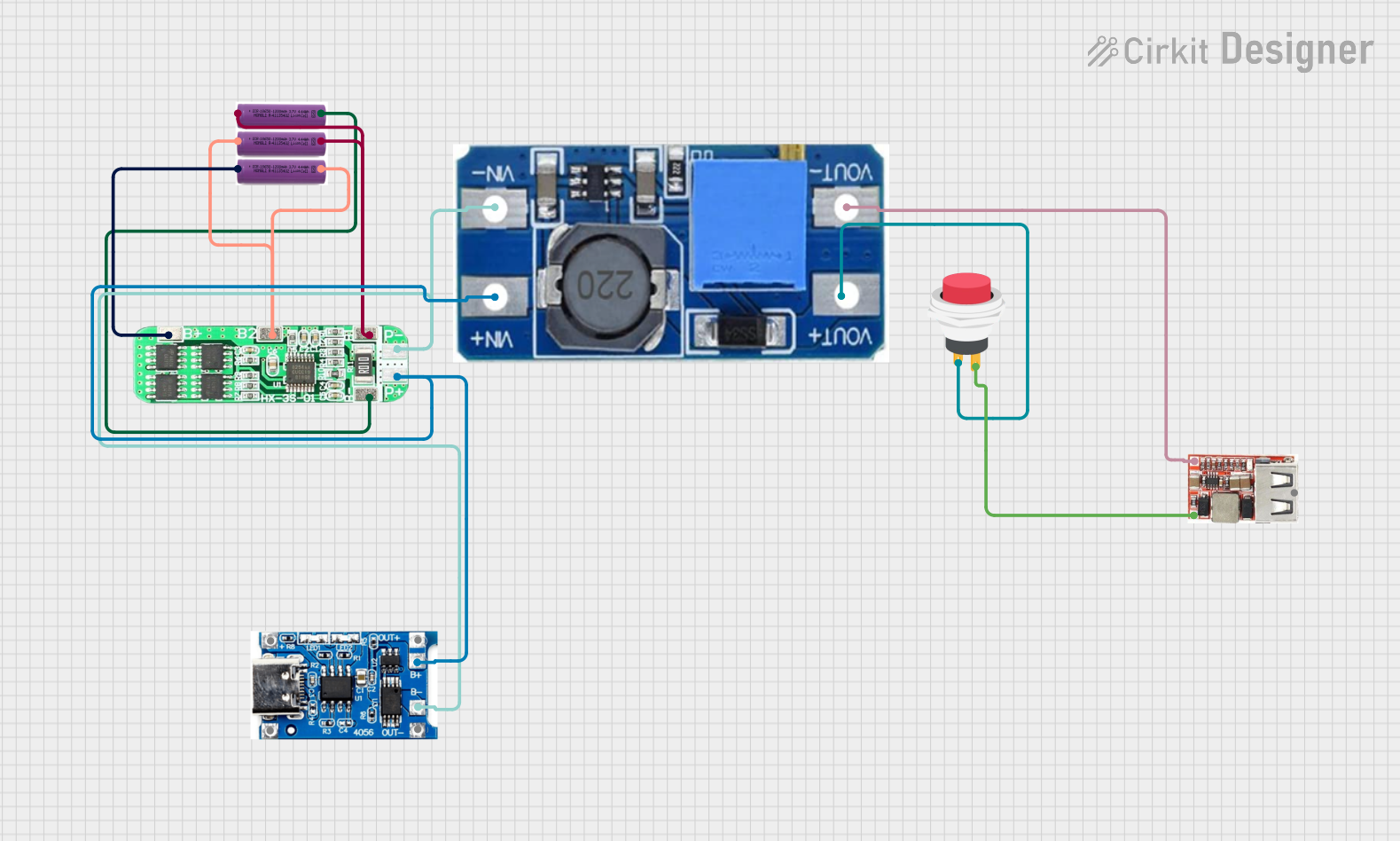
 Open Project in Cirkit Designer
Open Project in Cirkit DesignerExplore Projects Built with NI-MH Battery Charger

 Open Project in Cirkit Designer
Open Project in Cirkit Designer
 Open Project in Cirkit Designer
Open Project in Cirkit Designer
 Open Project in Cirkit Designer
Open Project in Cirkit Designer
 Open Project in Cirkit Designer
Open Project in Cirkit DesignerTechnical Specifications
Key Technical Details
- Input Voltage: Typically ranges from 100V to 240V AC for standard wall chargers.
- Output Voltage: Usually matches the rated voltage of the batteries being charged (e.g., 1.2V per cell).
- Charging Current: Varies depending on the charger model and battery capacity (e.g., 500mA to 2A).
- Battery Compatibility: Designed to charge Ni-MH batteries of various sizes (e.g., AA, AAA, C, D, 9V).
- Charge Indication: LED indicators or LCD displays to show charging status.
- Safety Features: Overcharge protection, temperature monitoring, and short-circuit prevention.
Pin Configuration and Descriptions
| Pin Number | Description | Notes |
|---|---|---|
| 1 | Positive Output | Connects to the positive terminal of the battery |
| 2 | Negative Output | Connects to the negative terminal of the battery |
| 3 | Ground (if applicable) | For chargers with a grounding pin |
| 4 | Control/Feedback (optional) | For smart chargers with communication features |
Note: The actual pin configuration may vary depending on the charger design.
Usage Instructions
How to Use the Component in a Circuit
- Connect the Charger: Plug the charger into an AC outlet.
- Insert Batteries: Place the Ni-MH batteries into the charging slots, ensuring correct polarity.
- Start Charging: The charger will typically begin charging automatically.
- Monitor Charging: Observe the charge indication to know when the batteries are fully charged.
- End Charging: Once charged, remove the batteries from the charger.
Important Considerations and Best Practices
- Battery Orientation: Always insert batteries with the correct polarity to prevent damage.
- Charger Compatibility: Use a charger that is compatible with the size and type of Ni-MH batteries you are charging.
- Charging Time: Do not exceed the recommended charging time to avoid overcharging.
- Heat Dissipation: Ensure the charger is in a well-ventilated area to prevent overheating.
- Maintenance: Periodically clean the charger's contacts and battery terminals.
Troubleshooting and FAQs
Common Issues
- Batteries Not Charging: Ensure the charger is plugged in and the batteries are correctly inserted.
- Charger Overheating: Remove the charger from the power source and allow it to cool before retrying.
- Incomplete Charging: Check if the batteries have reached the end of their lifespan or require reconditioning.
Solutions and Tips for Troubleshooting
- LED Indicator Not Lighting Up: Confirm the power source and check for any damage to the charger.
- Charging Taking Too Long: Ensure you are using the correct charger for your battery capacity.
- Batteries Getting Hot: This can be normal to some extent, but if excessively hot, stop charging and check the batteries and charger.
FAQs
Q: Can I charge other types of batteries with this charger? A: No, Ni-MH battery chargers are specifically designed for Ni-MH batteries and should not be used with other types.
Q: How do I know when the batteries are fully charged? A: Most chargers have an indicator light or display that will change color or turn off when charging is complete.
Q: Is it safe to leave the batteries in the charger overnight? A: While many chargers have overcharge protection, it is generally not recommended to leave batteries charging unattended for extended periods.
Q: Can I charge a single battery or do I need to charge pairs? A: This depends on the charger. Some chargers can charge individual batteries, while others require pairs. Refer to the charger's manual for specific instructions.
Example Code for Arduino UNO Connection
Note: This section is hypothetical as standard Ni-MH battery chargers do not typically interface with an Arduino. However, for the purpose of this exercise, we will assume there is a smart charger with an Arduino-compatible interface.
#include <Wire.h>
// Define the I2C address for the smart charger
#define CHARGER_ADDR 0x40
void setup() {
Wire.begin(); // Start the I2C bus
Serial.begin(9600); // Start serial communication for debugging
}
void loop() {
Wire.beginTransmission(CHARGER_ADDR); // Begin transmission to the charger
Wire.write(0x01); // Send a command to start charging
Wire.endTransmission(); // End transmission
delay(1000); // Wait for 1 second
// Request charging status from the charger
Wire.requestFrom(CHARGER_ADDR, 1);
if(Wire.available()) {
byte status = Wire.read(); // Read the status byte
// Print the charging status to the serial monitor
Serial.print("Charging Status: ");
if(status == 0x00) {
Serial.println("Not Charging");
} else if(status == 0x01) {
Serial.println("Charging");
} else if(status == 0x02) {
Serial.println("Charge Complete");
} else {
Serial.println("Error");
}
}
delay(5000); // Wait for 5 seconds before checking again
}
Note: The above code is for illustrative purposes only and may not correspond to a real-world Ni-MH battery charger.